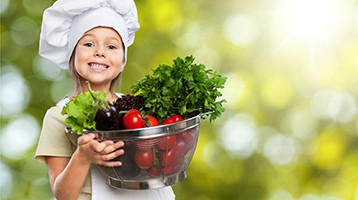Many times we’ll get the question: what foods should I be eating? In this case, there’s a list for that. The USDA in the past has evaluated ORAC scores for hundreds of foods, herbs and spices and rates them in their levels of antioxidants. The function of antioxidants is to donate a free electron to a unstable molecule. This unstable molecule is referred to as a free radical until it gets that free electron. Free radicals cause damage our bodies. If we eat foods high in free radicals and low in antioxidants it may accelerate aging and disease. Here’s the USDA’s ORAC Scores from the last publication in 2010 http://www.orac-info-portal.de/download/ORAC_R2.pdf
Scroll down to the foods and you’ll see that in the “MEAN” column lists the broken down ORAC scores. For example, basil, cinnamon and cloves have very high ORAC scores. The vegetable and fruit category contain the foods with the most numerous high ORAC scores. For example in the fruit category acai, blackberry and cranberry top the list. For vegetables be certain to add artichokes, beets including the greens, cabbage and ginger to your diet. For nuts, peanuts and walnuts possess the highest ORAC scores and for legumes black, kidney, pinto beans and lentils top the list. Cocoa itself has a high ORAC score but once fat and sugar are added as in candies the score goes down. Sorgum grain tops the list as a superfood grain. Check out this resource for sorgum: http://wholegrainscouncil.org/whole-grains-101/whole-grains-101-orphan-pages-found/health-benefits-sorghum
And here for sorgum recipes: http://www.thekitchn.com/whole-grain-primer-5-ways-to-use-sorghum-this-summer-191244
or here: http://www.eastewart.com/recipes-and-nutrition/ancient-grains-20-sorghum-recipes-youll-love/
The USDA no longer complies a ORAC list citing the ORAC values has no impact on human health. Despite potential downfalls it continues to be a list of high nutrient dense whole foods. If you want to increase the nutrition in your diet be sure to include the whole foods with high ORAC scores.
Did you know? Antioxidants are actually the protective part of a plant for it’s survival? Yes! Antioxidants are only a property of plants and not animals so you’ll never see a meat, poultry, dairy or seafood product high in antioxidants. What prevents a fruit, vegetable, herb or spice from being eaten (or over-consumed)in the wild is what protects us from potential disease when we eat it!
